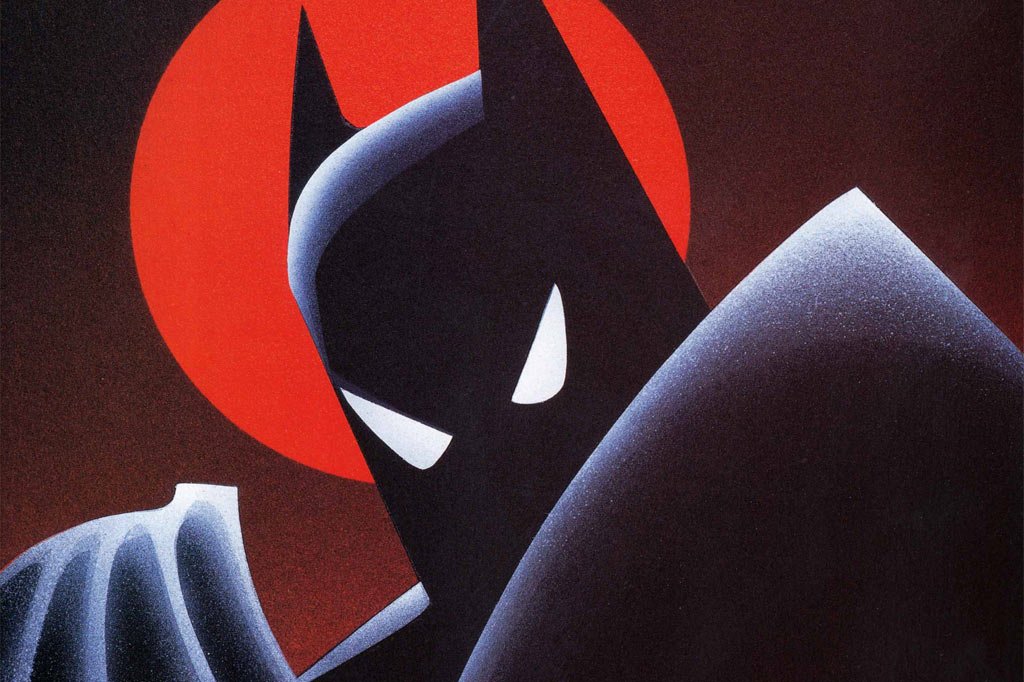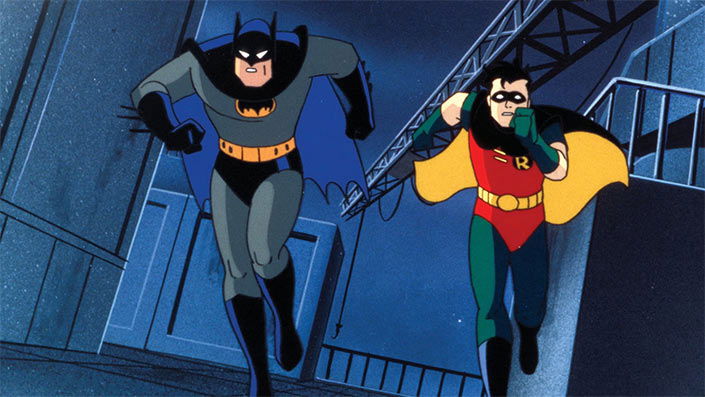
We chose to publish this article today as this is the third Saturday in September, which means it is Batman Day! For more Batman-related articles and reading orders, we invite you to check out our Batman archives!
![]()
During the 1980s, as Disney dominated the afternoon on TV, some affiliate stations contacted FOX to ask if the young network wouldn’t be interested in entering that market. This led to the creation of the Fox Kids Network which debuted on September 1990. Margaret Loesh who was head of Marvel Productions at that time was recruited to launch the new venture. To achieve her goals, she started working with Warner Bros. Animation.
It started slow, but things became serious in the third season with shows that eventually impacted a generation of kids and the comic book industries: X-Men and, of course, Batman: The Animated Series!
The Creation of Batman: The Animated Series
Bruce Timm was working on the Tiny Toons show at Warner when it was announced that the company was going to develop a Batman series. He immediately started producing Batman drawings, refining his vision of marrying the styles of Disney’s Sleeping Beauty with Alex Toth’s Space Ghost. It worked as the presentation of his work got him the job.
Timm worked with coproducer Eric Radomski to create the overall look and tone of the show–Radomski who later worked on the HBO’s Spawn series is the one who created the film-noir mood and a lot more. He is not the only one who needs to be credited for adding crucial elements to the series as Alan Burnett was recruited as story editor and co-producer to save the project when the quality of the scripts became a huge source of conflicts. Burnett soon brought back onboard Paul Dini and together they elevated what we were to expect from a Batman series.
The list of names to add to the list of talented people who helped make Batman: The Animated Series a creative and public success is quite long. From background design supervisor Ted Blackman to composer Shirley Walker, film editors Joe Gall and Al Breitenbach, voice director Andra Romano, a plethora of talented writers, and of course, the casting led by now-legendary Kevin Conroy (RIP).
Not Another Children’s Show
From the start, it was made clear that Batman: The Animated Series would offer a serious take on the character. No puns or running outside in the daylight. This world was dark, and frightening, influenced by film noir, the Fleischer Superman shorts, Japanese animation, German expressionism, the work of the giants in the comics industry, and recent interpretations of the characters, from Frank Miller’s The Dark Knight Returns to Tim Burton’s Batman movie. But it was going to be different nonetheless.
This Batman was not completely contemporary, nor it was stuck in the past. The show would be timeless. Futuristic in some regards, but retro in others. And it would break new ground with stories that would not stick to the Saturday Morning Cartoon template. Emotional drama and violent crime-fighting was a new recipe hard to sell to the censor comity (Broadcast Standards and Practices) which protected the children against questionable programs.
Yes, Batman: The Animated Series was a show for kids. That’s why FOX insisted on Robin’s presence–young Dick Grayson would therefore appear in every episode starting season 2. His role grew and the introduction of Batgirl–and their budding romance–would lead the character to become Nightwing. Characters evolved in the series, and some were totally reinvented (like Mister Freeze)–and new and iconic ones were created (like Harley Quinn).
The Lasting Influence of Batman: The Animated Series
It was a Batman series after all, and The Dark Knight comes with faithful allies and a great rogues gallery. Even if Batman: The Animated Series developed its own mythology around the iconic hero, it adapted a lot of classic stories from the comics, sometimes blending them together to deliver a more complete adventure. But it went also the other way around, as the TV Show became influential. It changed a lot in the world of animation for children, but also in the Batman universe in general.
New takes on existing characters and their relationship with one another went on to be used in comic books (the most famous being the reinvention of Mr. Freeze). Of course, the creation of Harley Quinn is now the most famous creation from the DC Animated Universe as she became massively popular… everywhere. And the drawing style became the standard for the animated features from DC.
In fact, spinning off the success of Batman: The Animated Series, a whole universe of animated shows featuring superheroes was created like Superman: The Animated Series and Batman Beyond for a start, but also a new line of comics was launched.
More often than not, tie-in books are just easy cash grad without artistic value. It’s definitively not the case with The Batman Adventures. Coming from Kelley Puckett, Mike Parobeck Rick Burchett, and Ty Templeton, the book captured what makes the animated series great and became something really good on its own.
Launched after the success of the graphic novel Mad Love which explored Harley Quinn’s origins, The Batman Adventures was supposed to be a miniseries but ended up outlasting the show by a decade. In fact, the comics changed to follow the different animated series–fun fact, the book introduced the character of Roxy Rocket who would later appear in Superman: The Animated Series.
Since 2020, Paul Dini, Alan Burnett, and Ty Templeton worked on Batman: The Adventures Continue, a continuation of Batman: The Animated Series and its follow-up The New Batman Adventures. The adventure really is continuing!

